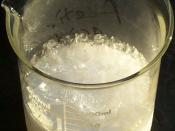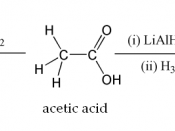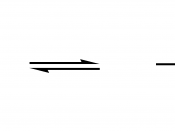Electrolytic solutions are solutions that contain free ions, thus enabling them to act as electrically conductive mediums. Like typical conductors, they also obey OhmÃÂs Law. The current that will flow in a conductor is affected by the conductorÃÂs resistance, according to the OhmÃÂs Law, V = IR. The resistance varies according to the nature and geometry of the conductor. The relationship of a materialÃÂs resistivity to its geometry is:(1)Where àis the specific resistivity in ÃÂé.cmÃÂ, which is dependent on the nature of the conductor, L is the conductorÃÂs length and A is its cross-sectional area.
It is often more convenient to work with conductivity rather with resistivity. The conductivity, L, is defined as the reciprocal of resistivity, thus:(2)Ls is the specific conductivity of the conductor defined as the conductivity of 1 cm3 of a material, expressed in é-1 cm-1. The cell constant can be obtained by measuring the conductance of a solution of known specific conductance.
The specific conductivity of an electrolyte is dependent on its equivalent concentration and the mobility of the ions present. For an electrolyte consisting of ions A+ and B-, with ñ as the fractional dissociation and c as its concentration in equivalents per liter,(3)Where UÃÂs are the ionic mobilities and F is FaradayÃÂs constant. It is now convenient to introduce the equivalent or molar conductivity, ÃÂ, defined as(4)Suppose dissolving a compound AB in water will produce ions A+ and B-. The conductivity of the solution is a result of the movement of the ions to the electrodes. Cations are attracted to the negative electrode and the anions are attracted to the positive electrode. Changes in the number and mobilities of the ions accompanied with change in concentration may affect the conductance of the solution. Though the constituent anions and cations may be of the...


